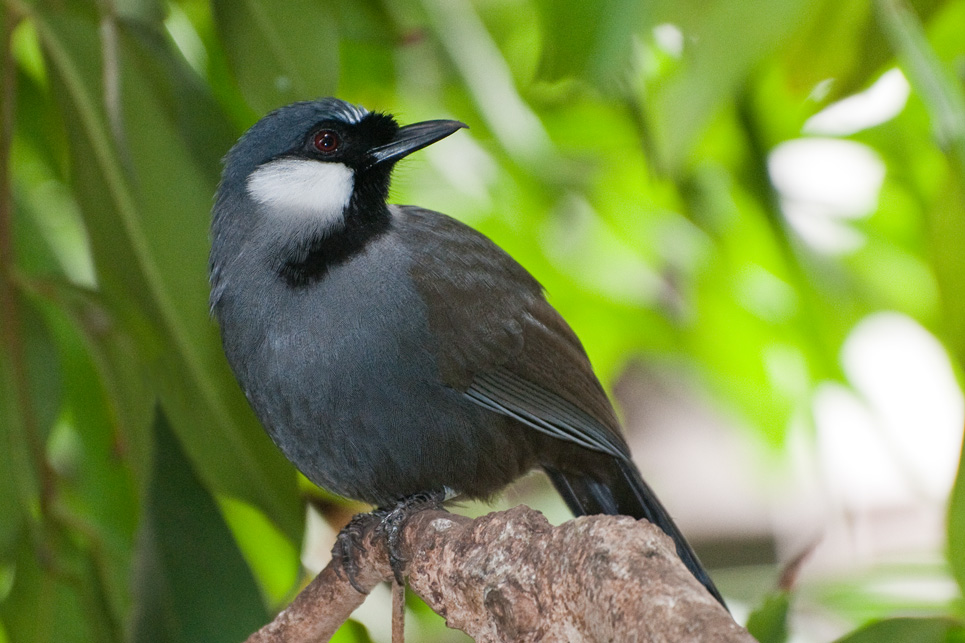Black-throated laughing thrush
Garrulax chinensis
The black-throated laughing thrush measures 25 cm in length and weighs between 90 and 130 g. The plumage is soft, loose and fluffy with no difference between sexes. The face and beak are black with a splash of white behind the eyes. The top of the head and body are a blue-grey with brown overtones on the wings and tail. The strong, stout legs and feet are a pale red.
Conservation Status: IUCN

Distribution
They are found in Cambodia, south and southwest China, Laos, Myanmar, Thailand and Vietnam.
Habitat
Its natural habitats are tropical and subtropical moist lowland forests, bamboo woods and bushes.
Diet
Insects, crustaceans and a variety of seeds and vegetation.
Reproduction
Cup shaped nests are made with moss, dead leaves and other available materials. Eggs are oval shaped and have a glossy, blue colour. The incubation period is approximately 14 days. The young are born featherless, are blind and feeble (altricial). However, they grow at a fast rate often eating the equivalent of their own weight, each day. The nesting period is from 13 to 16 days.
Adaptation
Highly sociable birds staying in small flocks while foraging for food. They have a wide variety of calls and call frequently and noisily to stay in touch with each other. When alarmed, their calls become a loud and harsh chattering or screaming. They stay close with their mates and other flock members, frequently preening each other. Their feet are used for gripping food. They are non-migratory birds and even tend to stay close to where they were born. Bathing is done by repeatedly hopping in and out of water.
Threats to Survival
Other than habitat loss and fragmentation in certain areas, this species is considered to be fairly common. It is often used as a song bird in communities in southeast Asia because of its pleasant song.














